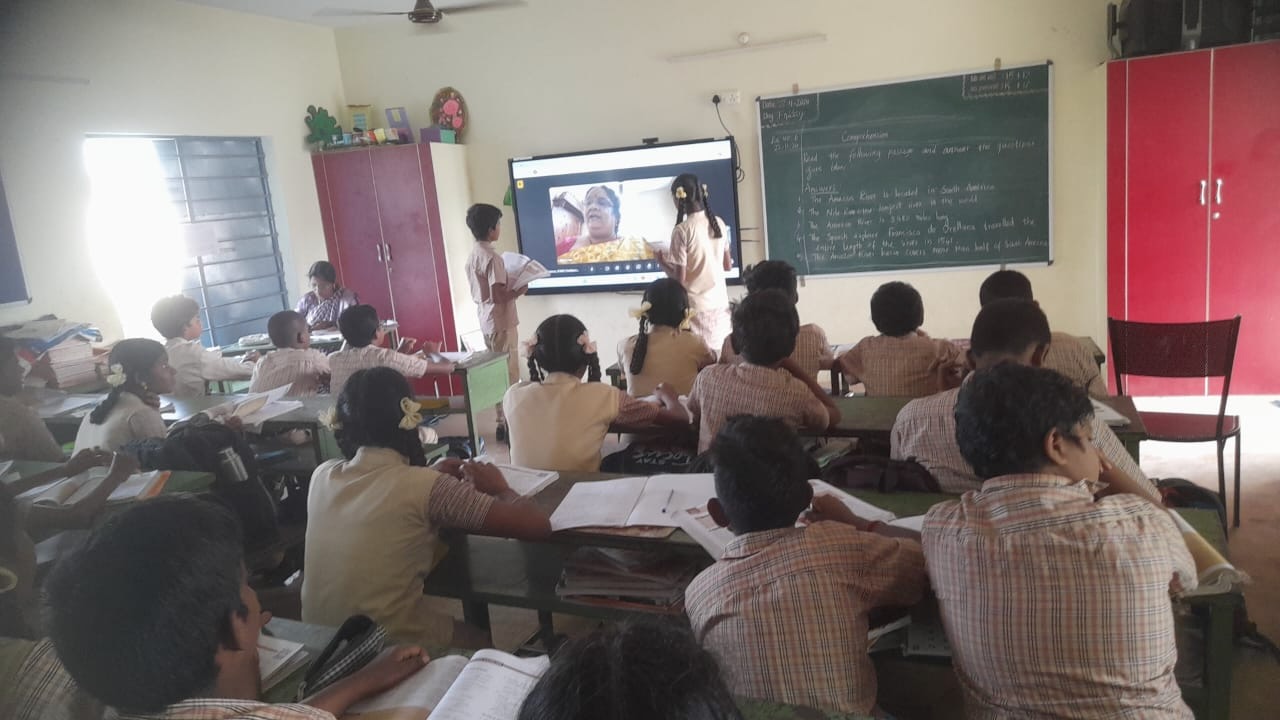When Learning is Joyful, Classrooms Come Alive
eVidyaloka|June 2025
In many rural classrooms today, we see something quietly powerful happening. Students who once sat shyly at the back now raise their hands. Science lessons turn into storytelling sessions. And concepts that once seemed abstract suddenly feel familiar.
This change is not driven by new infrastructure or flashy tools—it begins with how learning is made joyful. And much of that joy is shaped by the volunteer who teaches.
Take Nitya Vasu, a long-time volunteer teacher who has been part of the eVidyaloka community for over seven years. Her journey began behind the scenes, developing lesson plans while living in the US. But on moving back to India she stepped into the digital classroom herself. It became clear that her strength lay not just in what she taught—but how she taught it.
For Nitya, making learning fun is a responsibility. Her sessions are filled with mind maps, storytelling, open-ended questions, and ideas that invite students to think beyond the textbook. Science is introduced not just through definitions, but through connections: stories of scientists, real-life analogies, and imagination-led discussions.

What’s striking is that her students— often attending school with limited resources—respond with incredible insight and energy. As Nitya often shares, “Our kids are extra smart and intelligent. My part is just to enrich what they already have.” And she does so with intention—focusing especially on communication and reading skills, gently nudging students to express what they understand and believe.
She isn’t alone in this approach. Across eVidyaloka classrooms, many volunteers bring their unique spark to learning. But what unites them is a shared belief: that children, regardless of where they live, are inherently curious. And when teaching becomes engaging and playful, students do more than just absorb knowledge—they begin to apply, question, and create.
The classroom, in these cases, becomes an active space. Students aren’t afraid to make mistakes. They’re encouraged to share their ideas and see learning as something they can shape. And behind this transformation is a teacher who has taken the time to understand not just the syllabus, but the student.
Nitya’s methods reflect this philosophy deeply. Whether it’s preparing custom PowerPoints aligned to each school’s needs, or weaving in discussion-based exercises, her aim has always been to make the subject matter relatable. During her sessions, science terms are simplified, visuals are used to aid memory, and lessons often end with “What do you think?” instead of “What is the answer?”
She also credits the local school ecosystem—Headmasters and Class Assistants who collaborate to support what happens offline. This partnership ensures students receive consistent guidance and encouragement, even after the screen goes off.
Over the years, she’s mentored students for contests, judged artwork, encouraged extended learning, and most importantly, built trust with her students. Many still reach out to her with questions, dreams, or simply to share a small win. These moments, she says, are what keep her going.
Nitya’s story is just one among many—but it reminds us of an important truth: great teaching isn’t just about instruction; it’s about inspiration. It’s about helping students see the joy in learning and giving them the confidence to ask, wonder, and dream.
And in rural classrooms across India, where students are eager to learn but often lack access, that kind of teaching can change everything.

Explore how quality education empowers children to break barriers and reach their full potential.
Discuss innovative teaching methods and approaches used by education NGOs to foster a love for learning.
Shed light on the dedicated educators, staff, and volunteers who drive the NGO's educational initiatives.
